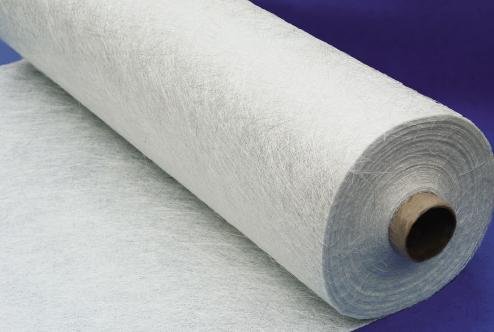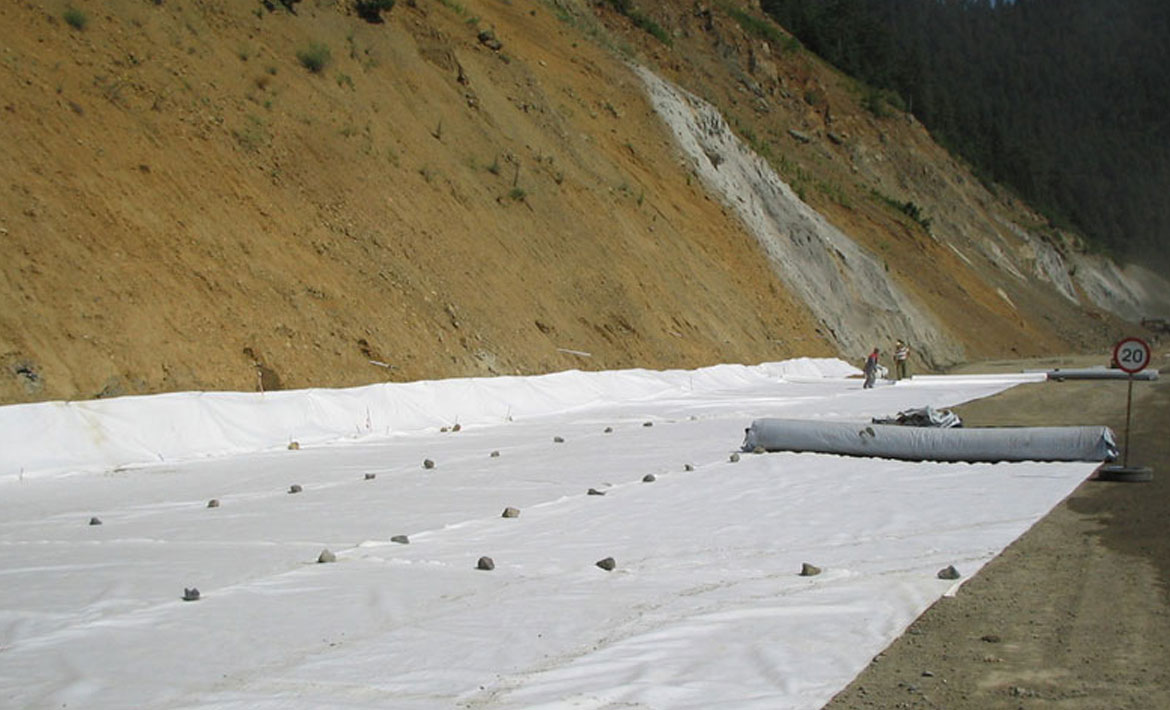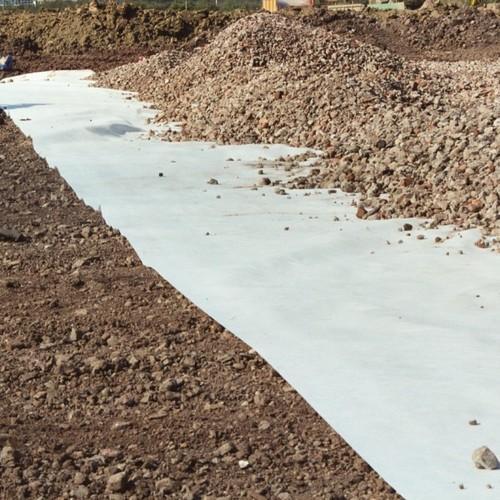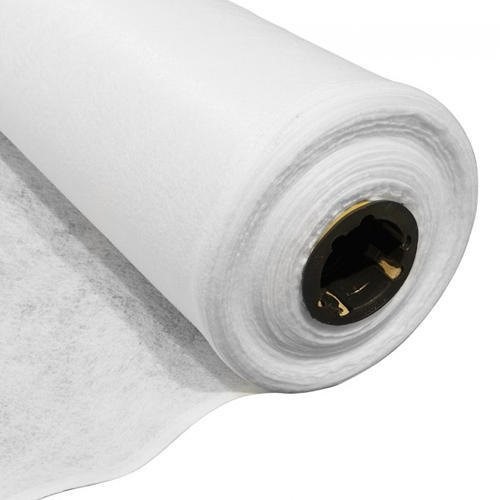Non Woven Geotextile
Non Woven Geotextile
Non Woven Geotextile Fabric manufacturing is a modern development in high tech process industries in which synthetic polymer fibres or filaments are continuously extruded and laid into moving belt. Then the mass of filaments or fibres are needle punched , in which filaments are mechanically entangled by a series of small needles in which fibre’s are welded together by heat and or pressure at their points of contact in a non woven mass.
Non Woven Geotextile Features:
Non Woven Geo Textile Manufacturers and Suppliers
Deesawala is a leading manufacturer and supplier of Non woven geotextiles which is a type of geosynthetic material made from polyester or polypropylene fibers that are mechanically or thermally bonded together. Non woven geotextile membrane are widely used in civil engineering and construction projects to enhance soil stability, drainage, filtration, and separation. Here is some information about non-woven geotextiles:
1 Usage of Non-Woven Geotextiles:
Non Woven Geotextiles also known as non woven geo textile fabric are used mainly for separation, protection, and filtration purposes in the areas of roadway, railroad, landfill, or civil and environmental projects. The manufacturing method uses a process with endless filaments to ensure the use of high-quality materials
2 Functions and Applications:
- Filtration: Non-woven geotextiles allow water to pass through while preventing the movement of fine soil particles. They are used in drainage systems, retaining walls, and erosion control applications.
- Separation: Geotextiles help separate different types of soils or aggregates with varying particle sizes, preventing mixing and maintaining the integrity of the structure.
- Drainage: They facilitate the flow of water by providing a pathway for its movement. Non-woven geotextiles are commonly used in road construction, landfills, and sports fields
- Reinforcement: Geotextiles can be used to strengthen soil, providing stability and load-bearing capacity. They are used in embankments, slopes, and retaining walls.
3 Physical Properties:
- Weight: Non-woven geotextiles are available in various weights, typically ranging from 100 to 400 grams per square meter (gsm). The weight determines the strength and durability of the geotextile
- Thickness: The thickness of non-woven geotextiles can vary from 0.5 to 10 millimeters (mm), depending on the application requirements
- Permeability: : Geotextiles have specific permeability properties, allowing water to pass through while retaining soil particles
- Strength: Geotextiles possess tensile strength and puncture resistance, which contribute to their effectiveness in reinforcement applications
- UV Resistance: Some non-woven geotextiles are manufactured with UV stabilizers to withstand exposure to sunlight.
4 Standards and Testing:
- Non-woven geotextiles are subjected to various standardized tests to evaluate their performance characteristics. These tests include tensile strength, elongation, puncture resistance, permeability, and durability under different conditions




- The International Organization for Standardization (ISO) and the American Society for Testing and Materials (ASTM) provide guidelines for testing and classifying geotextile materials.
5 Installation:
- Non-woven geotextiles are typically installed by placing them directly on the prepared soil surface or between different soil layers, depending on the application. They can be secured using pins, staples, or by overlying soil or aggregate layers
Non-Woven Geotextile Specifications:
The specifications of non-woven geotextiles can vary depending on the intended application and the specific product. Here are some common specifications that you may find for non-woven geotextiles
1 Material Composition:
- Non-woven geotextiles are typically made from synthetic fibers such as polyester (PET) or polypropylene (PP).
- The fibers are mechanically or thermally bonded together to form a stable and durable fabric.
2 Weight:
- Non-woven geotextiles are available in a range of weights, typically expressed in grams per square meter (gsm) or ounces per square yard (osy).
- Common weight options include 100 gsm, 150 gsm, 200 gsm, and so on. Heavier weights generally indicate higher strength and durability.
3 Thickness:
- Non-woven geotextiles can have different thicknesses, typically measured in millimeters (mm).
- Common thickness options include 0.5 mm, 1 mm, 2 mm, etc.
- Thicker geotextiles may offer better puncture resistance and strength.
4 Permeability:
- Geotextiles have specific permeability characteristics, which determine their ability to allow water to pass through.
- Permeability is usually expressed in terms of hydraulic conductivity, measured in liters per square meter per second (L/m²/s).
5 Tensile Strength:
- Tensile strength refers to the geotextile's ability to resist pulling forces.
- It is measured in terms of ultimate tensile strength and is typically expressed in kilonewtons per meter (kN/m) or pounds-force per foot (lbf/ft).
6 Puncture Resistance:
- Puncture resistance indicates the geotextile's ability to resist puncturing or penetration by sharp objects.
- It is typically measured in terms of force required to puncture the geotextile and is expressed in Newtons (N) or pounds-force (lbf).
7 Roll Dimensions:
- Non-woven geotextiles are usually supplied in rolls.
- Roll width and length can vary, commonly ranging from 1 to 6 meters (3 to 20 feet) in width and 50 to 100 meters (150 to 300 feet) in length
Non Woven Needle Punch Fabric :
- Deesawala Nonwoven Needle Punched Geotextiles Fabric is a continuous filament nonwoven needle punched polyester paving geotextiles, which provides stress relief, waterproofing and reduces reflective cracking functions in new and existing paved roads. Designed for countries having extreme weather conditions in mind, the product has undergone a number of years of testing and refinement to provide the best overall performance. The unique properties of these Geotextiles provide waterproofing and stress relief of the pavement structure. The high melt temperature of Polyester (PET) ensures that the geotextiles properties are not affected by the application of hot bitumen or asphalt
- Filtration : It can be the filtration layer of the dykes, river canal, seacoast, concrete slope, retaining walls. At the same time of preventing the clay granule from passing, it allows the water and the gas pass through freely
Application:
| Non Woven Geotextile Specification: | Non Woven Geotextile Application: |
| Unmatched finish as per the international standards | Paved and unpaved Roadways. |
| Strong and durable due to online calendaring. | Flood control. |
| Quality Tested products. | Landfills. |
| Tunnels. | |
| Landscaping. | |
| Construction works. |
| Product Grade | SG 120 | SG 120 | SG 120 | SG 120 | SG 120 |
| Unmatched finish as per the international standards | 2 | 2 | 2 | 2 | 2 |
| Roll Width*(m) | 100 | 100 | 100 | 50 | 50 |
| Roll Length(m) | 55 | 90 | 135 | 90 | 112 |
